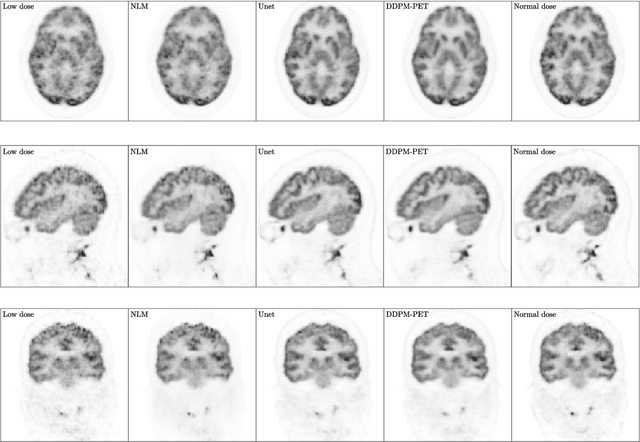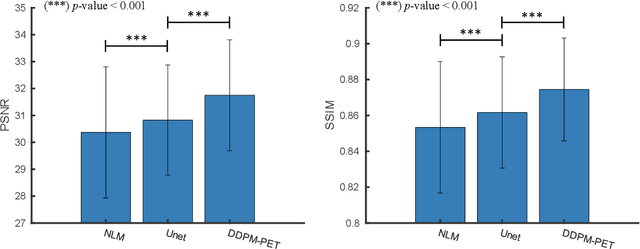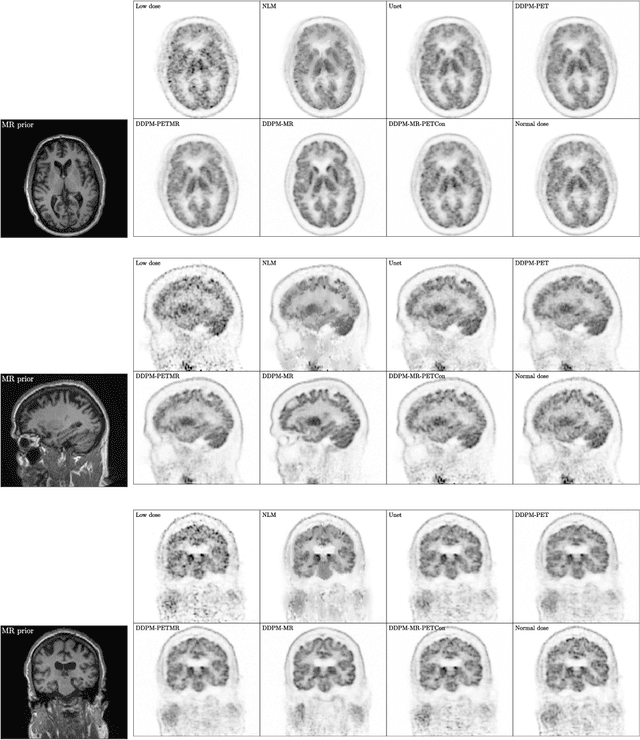Keith A. Johnson
TauPETGen: Text-Conditional Tau PET Image Synthesis Based on Latent Diffusion Models
Jun 21, 2023

Abstract:In this work, we developed a novel text-guided image synthesis technique which could generate realistic tau PET images from textual descriptions and the subject's MR image. The generated tau PET images have the potential to be used in examining relations between different measures and also increasing the public availability of tau PET datasets. The method was based on latent diffusion models. Both textual descriptions and the subject's MR prior image were utilized as conditions during image generation. The subject's MR image can provide anatomical details, while the text descriptions, such as gender, scan time, cognitive test scores, and amyloid status, can provide further guidance regarding where the tau neurofibrillary tangles might be deposited. Preliminary experimental results based on clinical [18F]MK-6240 datasets demonstrate the feasibility of the proposed method in generating realistic tau PET images at different clinical stages.
PET image denoising based on denoising diffusion probabilistic models
Sep 14, 2022



Abstract:Due to various physical degradation factors and limited counts received, PET image quality needs further improvements. The denoising diffusion probabilistic models (DDPM) are distribution learning-based models, which try to transform a normal distribution into a specific data distribution based on iterative refinements. In this work, we proposed and evaluated different DDPM-based methods for PET image denoising. Under the DDPM framework, one way to perform PET image denoising is to provide the PET image and/or the prior image as the network input. Another way is to supply the prior image as the input with the PET image included in the refinement steps, which can fit for scenarios of different noise levels. 120 18F-FDG datasets and 140 18F-MK-6240 datasets were utilized to evaluate the proposed DDPM-based methods. Quantification show that the DDPM-based frameworks with PET information included can generate better results than the nonlocal mean and Unet-based denoising methods. Adding additional MR prior in the model can help achieve better performance and further reduce the uncertainty during image denoising. Solely relying on MR prior while ignoring the PET information can result in large bias. Regional and surface quantification shows that employing MR prior as the network input while embedding PET image as a data-consistency constraint during inference can achieve the best performance. In summary, DDPM-based PET image denoising is a flexible framework, which can efficiently utilize prior information and achieve better performance than the nonlocal mean and Unet-based denoising methods.
 Add to Chrome
Add to Chrome Add to Firefox
Add to Firefox Add to Edge
Add to Edge